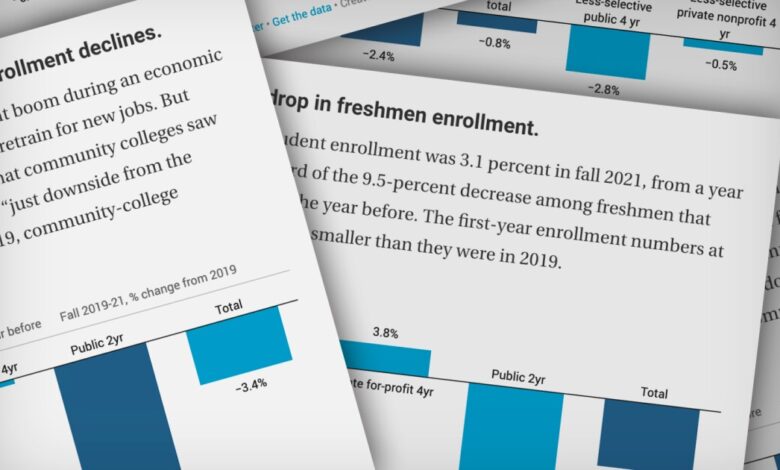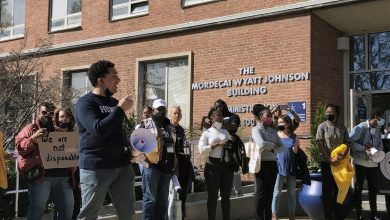Undergraduate Enrollment Continues Its Slide, Dipping 3.2 Percent From Last Year

As the pandemic drags on, campus life hasn’t quite bounced back to what it was pre-pandemic, and — according to a new report — neither has college enrollment.
Preliminary data from the National Student Clearinghouse Research Center, released Tuesday, reveals a 3.2-percent dip in undergraduate enrollment this fall compared with a year earlier.
It’s a decline that echoes that of last fall and has contributed to a 6.5-percent drop in undergraduate enrollment from fall 2019.
“If this current rate of decline were to hold up, it would be the largest two-year enrollment decline in at least the last 50 years in the U.S.,” said Doug Shapiro, the research center’s executive director, in a call with news media.
The new data, which reflect enrollments as of September 23, are based on 8.4 million students at just over half of the institutions that report to the center. The next update to the enrollment figures, part of the center’s research that tracks the pandemic’s effects on college attendance, will be in late November.
Overall postsecondary enrollment fell 2.3 percent this year, for a two-year decline of 4.3 percent.
A matter of critical concern, Shapiro said, is whether students whose college plans were thwarted by the pandemic will ever return. As wages increase in a tight employment market, it seems like more people have opted to work instead of attend college, he said.
“Trying to understand how those students might ever get back into the college path is really important,” Shapiro said.
Here’s a closer look at some of the report’s key takeaways:
Community colleges, again, bore the brunt of enrollment declines.
Community colleges typically experience an enrollment boom during an economic downturn, as unemployed workers head to college to retrain for new jobs. But enrollment trends since the pandemic began show that community colleges saw “no upside” from the pandemic-induced recession, “just downside from the recovery in the job market,” Shapiro said. Since 2019, community-college enrollment has fallen 14.1 percent.
There was a smaller drop in freshmen enrollment.
The decline in first-year student enrollment was 3.1 percent in fall 2021, from a year earlier. That’s less than a third of the 9.5-percent decrease among freshmen that occurred in fall of 2020 from the year before. The first-year enrollment numbers at all institutions are 12.3 percent smaller than they were in 2019.
Enrollment at highly selective four-year institutions increased.
The number of undergraduate students enrolled at private highly selective institutions, a designation that includes two groups of colleges — those that enroll fewer than a third of applicants, and another that admits between a third and half of theirs, according to the report — grew 4.3 percent in fall 2021, in a return to pre-pandemic levels. Less-selective private colleges saw enrollment fall 2.1 percent.
Enrollment also increased at highly selective public flagships, where undergraduate attendance rose 1 percent. Less-selective four-year publics’ enrollment fell 5.2 percent.
Shapiro said the most-selective public and private colleges “recovered all the ground that they lost last fall.”
Enrollment declines among student groups were smaller compared with the drops from last fall.
Declines from a year ago were the steepest among international students, at 8.2 percent. Among racial and ethnic groups, white, Black, and Native American undergraduate attendance fell the most in fall 2021. Combined with declines in 2020, the same groups of students saw enrollment fall the most since 2019.
Source link






